One of my favorite things to do is play pattern matchmaker. Is there anything better than finding that one pattern that will help you realize the dress of your dreams? Maybe you saw the dress in a museum, a vintage boutique, or Bergdorf’s. Whatever the case, perhaps owning it is out of reach. But with a little ingenuity, you can always DIY! Last week, I asked my blog readers for input on which dresses they most coveted pattern ideas for, and I’ll share some of them— as well as my pattern ideas— here. But first, here are my top tips for playing pattern matchmaker.
1. Look at patterns with an open mind. It’s easy to be put off by a pattern envelope— If the design is made in a print you dislike or the garment doesn’t fit the model properly, you might look past it. I try to make a point to check out the technical drawings of a pattern as much as possible (that’s the little line drawing that shows the basic lines of a garment). That way you won’t be distracted by the “variables” like fabric, model, or styling on the envelope.
2. Be ready to do a bit of light drafting. One of the best things you can do for yourself is to learn the basics of pattern modifications. Designers don’t start from scratch on each new pattern; they make their designs by changing the lines of basic patterns (or slopers), so why shouldn’t you? Check out the book Make Your Own Dress Patterns by Adele P. Margolis for a great laywoman’s explanation of the process.
3. The Frankenpattern is your friend. Have an arsenal of basic skirt patterns ready to go at any time—a pencil skirt, dirndl, full circle, and basic a-line will cover most of your needs. Mix these up with pattern bodices to get the dress of your dreams.
4. Give it your own spin. While it can be tempting to recreate a look exactly, why not put your own take on the design? Choice of color, fabric, and trims can make your garment more than just a copy.
Now, let’s look at some dresses!
This first submission is a style I’ve been seeing a lot in current fashion: a simple sheath dress with a dramatic collar. I love the beautiful jewel tone and the flattering collar of this Oscar de la Renta design.
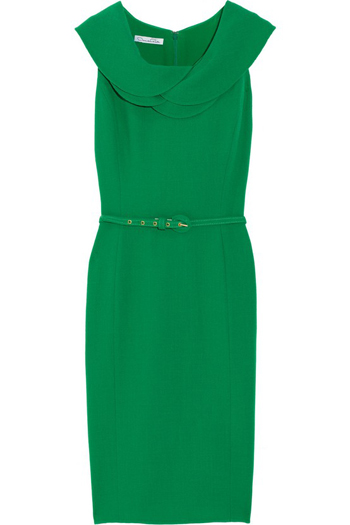
A great pattern match for this dress would be Vogue 8630.
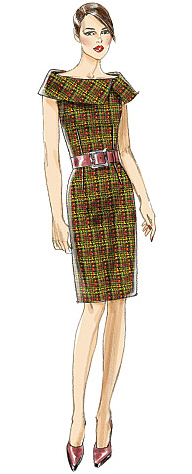
At first glance, it may seem too angular. But check out the technical drawing:
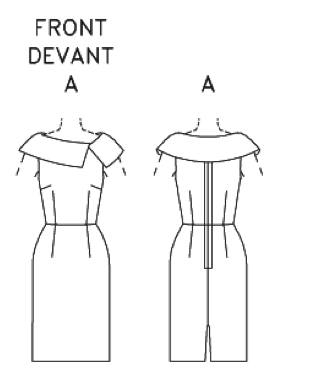
See how simple the lines are? It would be very easy to redraw the curve of the collar, like so.
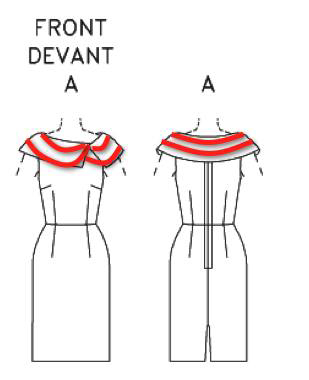
To get the double collar effect, just add a second collar underneath that is a smidge bigger than the first.
On to our next submission! This striped dress from ModCloth is adorable, isn’t it?

The basic lines of this dress— v-neck, shaped midriff, and flared skirt— can be achieved with a pattern like Vogue 8727.
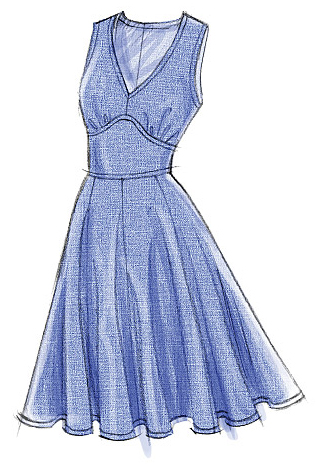
But we’d need to make some changes to get the extended shoulder and collar band. Let’s look at the technical drawing. If you draw new style lines out from the underarm and extend the shoulder, you’ll get that retro kimono sleeve look.
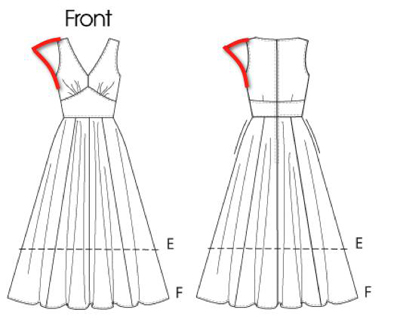
Next, draw in a band at the v-neck. Make this its own pattern piece (don’t forget to add seam allowances!).

The stripe effects can be achieved by using the fabric on different grainlines for the band, bodice, and midriff.
And last but not least: I couldn’t resist this Marilyn Monroe dress that a reader suggested.

The real standout in this dress (well, besides Marilyn herself) is that neckline. Image my delight when Sewaholic announced the release of her new Lonsdale dress!

That bodice is perfect for a Marilyn-worthy dress. I’m already planning on switching up the skirt to a pencil skirt for more bombshell appeal. (Do it in a Hawaiian print for Alfred Shaheen glamor!) You can also mimic the ruching on the skirt by slashing and spreading around the hips, extending the pattern to double the length in that area, and gathering vertically on each side seam. Or if that sounds too daunting, why not switch up the skirt with something like Vogue 8603?
